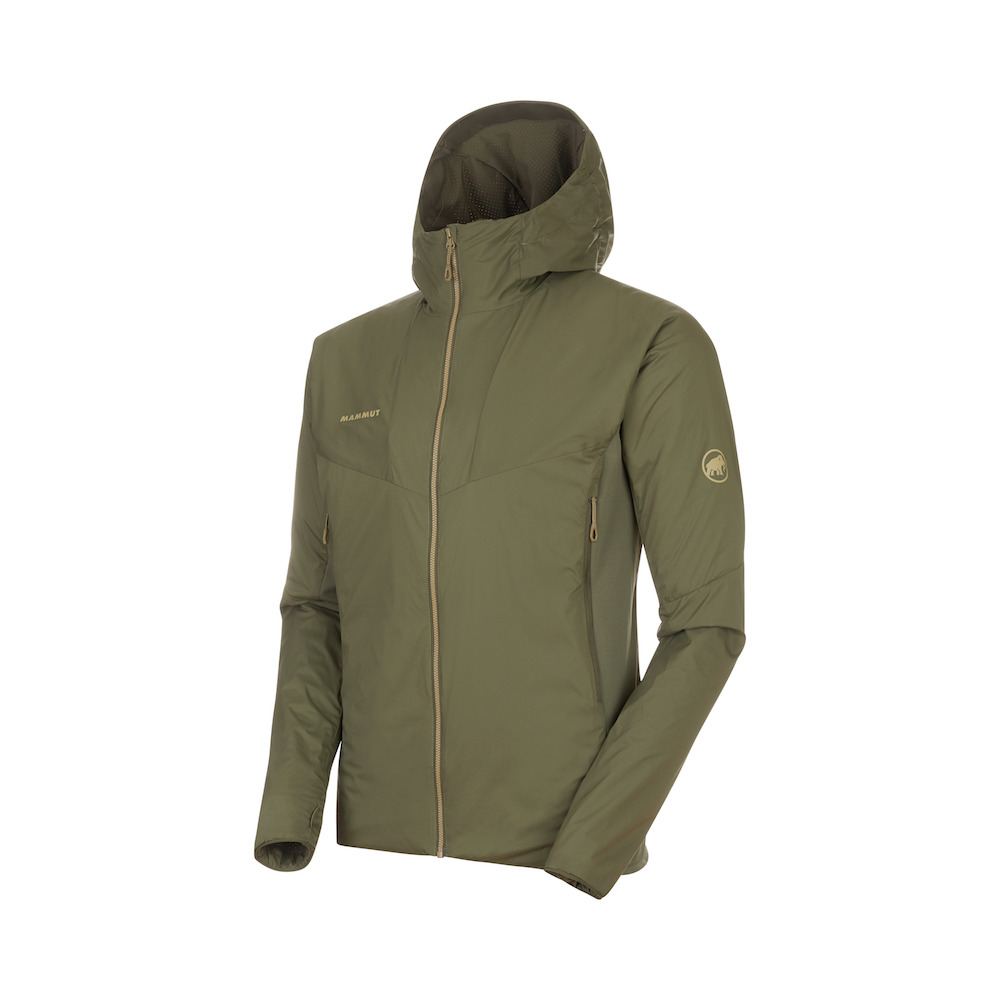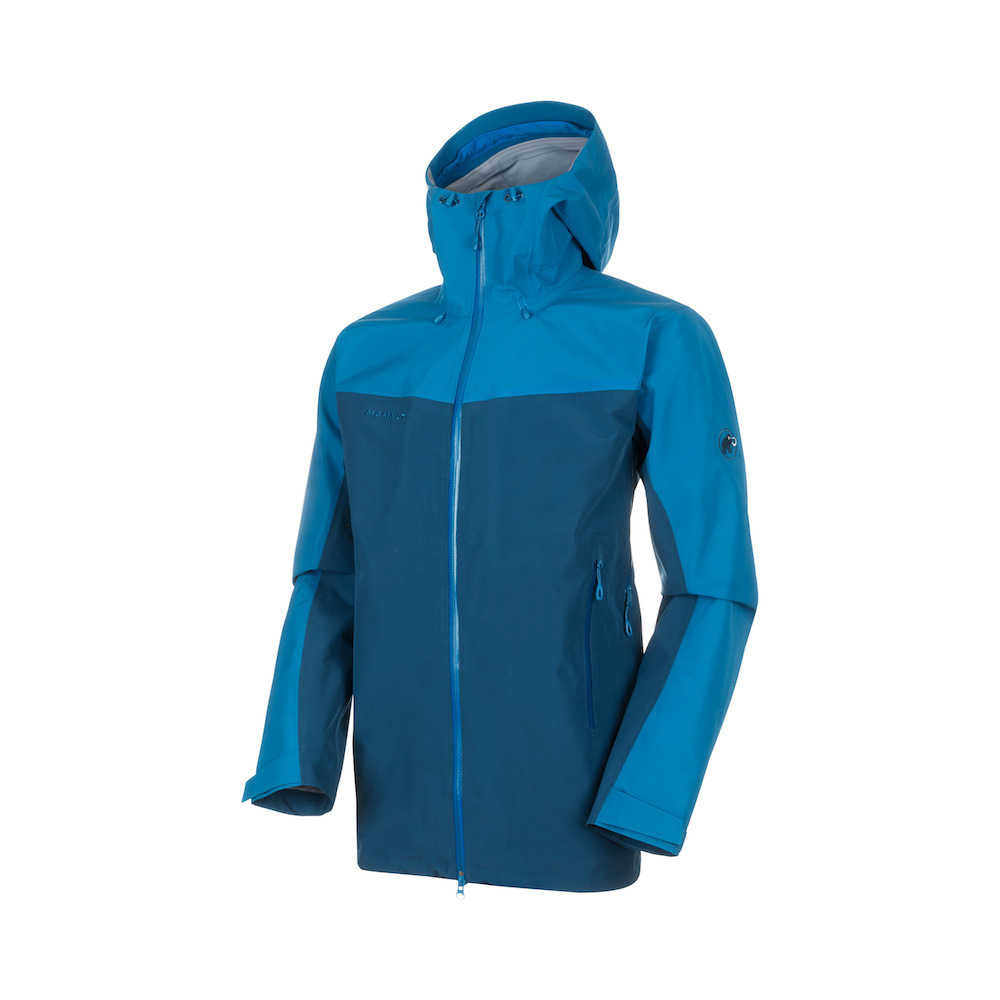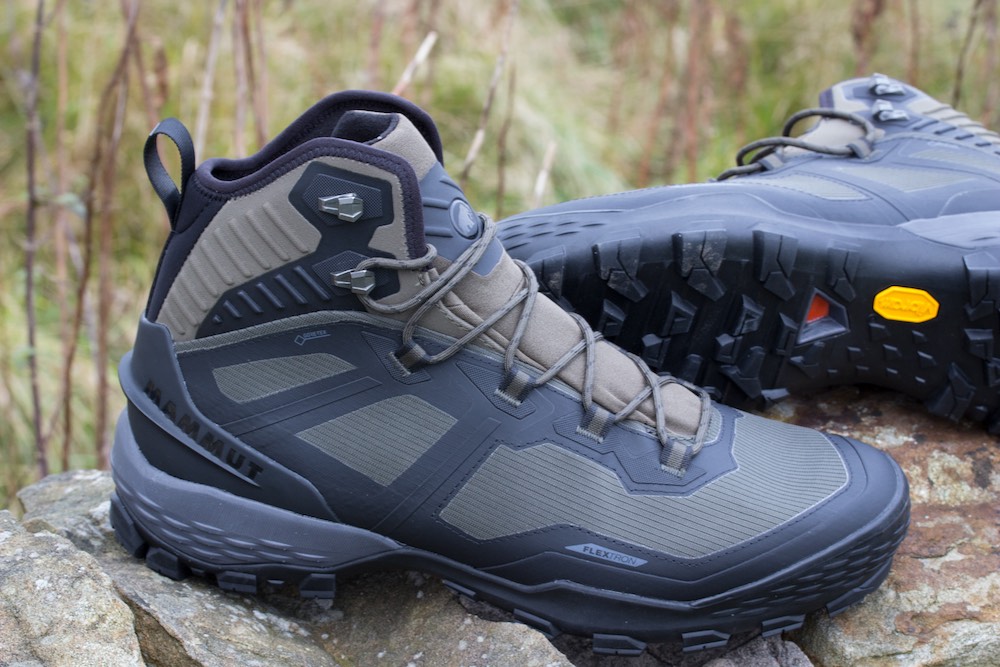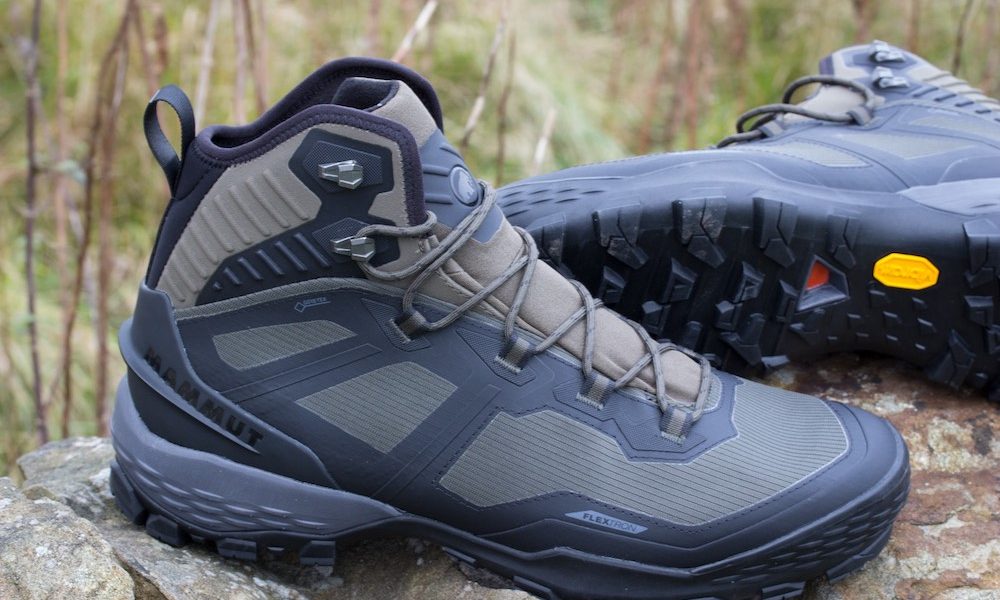Swiss brand Mammut’s tagline is ‘Absolute Alpine’ and fittingly it’s all about creating clothing, footwear, sleeping bags and other equipment which will work in the mountains where the brand was born in 1862. Back then it was a rope maker, but over the years it’s spread and expanded taking over respected Swiss boot brand Raichle and sleeping bag specialist Ajungilak along the way. For Brits though, there’s one big question: will kit designed with the high mountains of the Swiss Alps in mind still work on Britain’s stumpy, stormy and remorselessly damp hills?
To put that to the test, we have three different Mammut products in for review. The Rime Light IN Flex Hooded Jacket is a lightly insulated jacket with a wind-resistant shell and stretch fleece sides designed for all-round use. The Crater HS meanwhile is a sturdy, no-nonsense Gore-Tex waterproof shell aimed at all-round mountain and mountaineering use. Finally we have a pair of Ducan High GTX boots, a lightly insulated winter hiking boot with Mammut’s Flextron spring steel mid-sole unit. It’s early days, but here are some first impressions of all three.

Rime Light IN Flex Hooded Jacket
Mammut Rime Light IN Flex Hooded Jacket – £179
There’s a whole family of Rime IN insulated jackets including down and synthetic fills, but the Light IN Flex is the one aimed squarely at fast movers who want a mix of warmth and breathability. It’s lined with lightweight 40g stretchy synthetic OTI Stretch insulation, but with side panel made from stretch fleece for increased breathability. The outer shell fabric is wind-resistant and water-repellent Pertex Quantum Air that trades a little outright windproofing for better breathability when working hard. You also get a helmet-friendly hood – this is designed for the Alps, remember – and two harness-friendly hand pockets. First impressions are that the combination of stretchy components and a characteristically close, slim Mammut fit make it a great cool conditions mountain midlayer worn under a close-fitting shell. It’s appreciably cooler and more breathable than a typical pure insulated jacket and all-round comfortable.
In milder conditions, you can wear it as a stand-alone outer layer, which makes it more versatile than a fleece, but cold winds cut right through the fleece side-panels so it works best when things are relatively still. The hood does a decent job with a rear adjuster that also tensions the front opening so far we’ve mainly used it without a helmet, where it’s fine, but a quick try-on suggests that it works with a lid too. Finally at 345g it’s light enough to fold into its stuff pocket and stash away in your pack.
INITIAL VERDICT: The Rime Light Flex Hoody reminds us of a slightly warmer version of brilliant Arc’teryx Atom SL jacket. Like that it’s a useful balance of insulation and breathability that works both as an alternative to a conventional fleece mid-layer with a sleek cut, but also as an effective outer layer in stiller conditions or when you’re working hard. Feels like a keeper.

Mammut Crater Hooded Hard Shell Jacket
Mammut Crater Hooded Hard Shell Jacket – £299
The Crater is Mammut’s no-nonsense mountain walking come mountaineering shell jacket. It’s made from sturdy feeling, bog-standard 3-layer vanilla Gore-Tex fabric rather than some premium Pro, C-knit or Active show pony material and at a smidgeon over 539g, it’s not a lightweight. Nor does it get swanky YKK Vislon zippers or fancy fasteners, though it does have pit-zips for online cooling manoeuvres. The trade-off for that is a relatively affordable £300 price-tag and a reassuringly tough, durable feel, that suggests that it’ll last and survive contact with the odd prickly rock – a helmet hood hints at its mountaineering intentions too.
The first thing that’ll strike you, is that despite Mammut’s ‘Regular Fit’ designation – the Rime Light Flex is ‘Athletic’ – the cut is narrow, slim and long, slightly too long for me coming down to below crotch level and actually restricting movement slightly. Of course, if you happen to be long and slim yourself, this is a bonus, but it’s definitely a jacket you should try for size unless you suit Mammut’s sleek fit. Otherwise the jacket has a solid, well-engineered feel, with easy to use adjustments, though the hem-cord could use a more glove-friendly tab and the hood with ample, stiffened brim, works well with or without a helmet. Again though, a more glove-friendly adjuster at the back would be an improvement. It’s just a little fiddly. The pit-zips work, but open only one way starting at the torso end, so if you’re someone who prefers to vent from the sleeve first look elsewhere. That’s mostly quibbling though.
INITIAL VERDICT: It may be designed with the Alps in mind, but the Crater has a solid, UK-friendly feel and would work just as well on the Ben as above Zermatt. One proviso is that it does have a very singular, uncompromisingly long, slim fit which will work best for those with a greyhound-like lean build and extended torso.

Mammut Ducan Pro High GTX Boots
Mammut Ducan Pro High GTX Boots – £189
The Ducan Pro High GTX is a winterised take on Mammut’s summer Ducan hiking boot. That doesn’t mean a crampon-friendly chassis, more that the boot gets an lightweight insulated lining for a bit of extra warmth when the temperatures fall. The Vibram Flextron outsole’s relatively lightly treaded too, more aimed at dry, cold, frosted rocky stuff than snow or mud. The boot has a futuristic look with the fabric upper and bonded overlays reflecting a lot of techy construction features. Stuff like the Flextron, spring-steel based mid-sole which is claimed to ‘prevent deflection of the foot and provide improved vertical support for more efficient use of energy on hikes and climbs’. You also get an anatomical last, asymmetric lacing and a mono-tongue for one-sided entry. The bottom line for all this claims Mammut is ‘a really good fit’.
Our experience is that Mammut’s Raichle heritage means the brand generally has a good grip on boot design and an initial potter about felt positive. The boots are impressively light at 1100g per pair and true to the name are cut relatively high over the ankle, which should keep out some of the snow. That Vibram rubber has a slightly sticky feel to it, which hints at good sub-zero grip. There’s a Gore-Tex liner too for those slush-puddling moments. Finally there’s that high quality feel that Mammut stuff tends to have.
INITIAL VERDICT: The Ducan Pro’s trump card looks to be its combination of lightweight, cold and mostly dry condition grip and that added insulated padding. That should appeal to anyone who likes the light, nimble feel of summer fabric boots, but finds them a tad cool in sub-zero conditions. Throw in some serious chassis tech and futuristic aesthetics and they look like an interesting choice for winter hiking, though not an obvious call for UK mud.
More info at: www.mammut.com/uk






